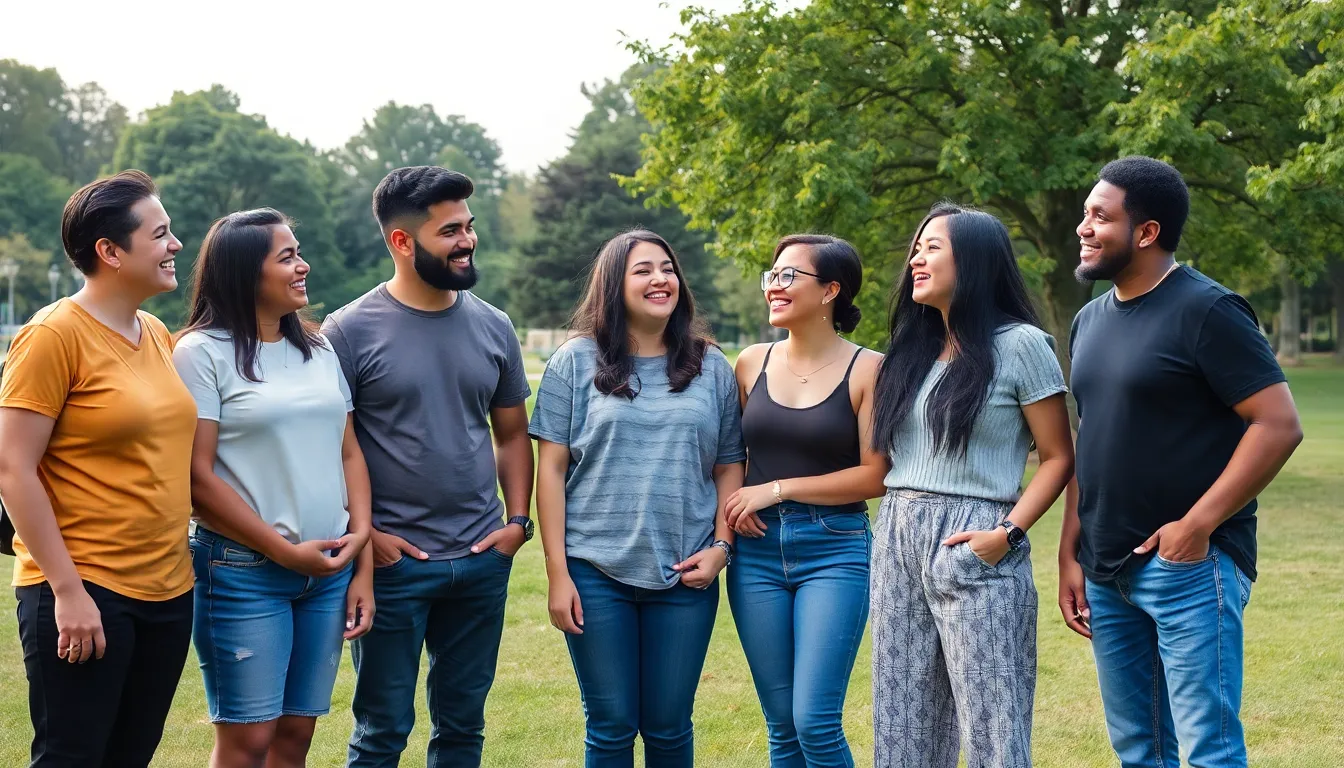Intersex individuals often exist in the shadows of societal norms, challenging traditional views of gender and sex. With a diverse range of biological variations, intersex people possess physical traits that don’t fit typical definitions of male or female. This complexity raises important questions about identity, representation, and acceptance in a world that often prioritizes binary classifications.
Estimating the number of intersex people globally is a daunting task, as many remain uncounted due to stigma and lack of awareness. Current estimates suggest that intersex traits may appear in about 1 in 1,500 to 1 in 2,000 births, but these figures can vary widely. Understanding the prevalence of intersex individuals is crucial for fostering inclusivity and ensuring their rights and needs are recognized in society.
Table of Contents
ToggleUnderstanding Intersex
Intersex refers to individuals exhibiting biological attributes that don’t fit traditional male or female classifications. These individuals may present variations in chromosomes, gonads, hormone levels, or genitalia. The intersex spectrum comprises numerous conditions, including, but not limited to, androgen insensitivity syndrome, congenital adrenal hyperplasia, and Turner syndrome.
The estimated occurrence of intersex traits ranges from 1 in 1,500 to 1 in 2,000 births. This statistic highlights the significant presence of intersex individuals within the global population. However, underreporting occurs due to societal stigma and lack of awareness regarding intersex identities. Many intersex people remain uncounted, complicating accurate assessments of their demographics.
Intersex individuals often face unique challenges. They may confront medical, social, and legal hurdles throughout their lives. Societal attitudes toward intersex people frequently lead to discrimination, exclusion, and misunderstanding. Greater inclusivity, representation, and awareness are crucial in ensuring intersex individuals receive the rights and understanding they deserve.
Global Prevalence of Intersex People

Estimating the global prevalence of intersex individuals remains complex due to various sociocultural factors and a lack of comprehensive data collection. Current estimates indicate a prevalence of intersex traits in approximately 1 in 1,500 to 1 in 2,000 births.
Estimated Statistics
Intersex traits encompass a range of conditions, leading to varied estimates. A report by the United Nations (UN) suggests that about 1.7% of the population may possess intersex traits, which translates to 1 in 60 individuals. Specific estimates include:
| Source | Prevalence |
|---|---|
| World Health Organization (WHO) | 1 in 1,500 to 1 in 2,000 |
| United Nations (UN) | Approximately 1.7% |
| Intersex Sector Consultation | 1 in 60 individuals |
Statistics indicate that many intersex people remain unreported due to stigma, societal pressure, and lack of awareness regarding intersex identities.
Regional Variations
Prevalence of intersex traits varies significantly across regions. Cultural factors, medical practices, and the level of awareness contribute to these differences. Key observations include:
- North America: Estimates range from 1 in 1,500 to 1 in 2,000 births. Access to healthcare plays a crucial role in identification.
- Europe: Similar estimates to North America exist, yet some regions report higher numbers due to better data recording and supportive policies for intersex individuals.
- Asia and Africa: Limited data is available, but estimates suggest that cultural stigmas continue to prevent accurate reporting and support for intersex conditions.
- Australia: Estimates mirror those of North America and Europe, with ongoing community support fostering awareness and acceptance.
These regional variations underscore the need for standardized data collection and increased advocacy for intersex rights globally.
Factors Influencing Intersex Conditions
Intersex conditions result from various genetic and environmental factors. Understanding these influences provides insight into the complexities of intersex identities.
Genetic Factors
Genetic factors significantly influence the likelihood of intersex traits. Specific variations in chromosomes can lead to intersex development. Individuals may possess atypical combinations of sex chromosomes, such as Turner syndrome (45,X) or Klinefelter syndrome (47,XXY). Hormonal influences during fetal development also play a critical role; conditions such as androgen insensitivity syndrome arise from genetic mutations affecting androgen receptors, impacting the body’s response to male hormones. Research indicates that certain intersex conditions frequently run in families, suggesting a hereditary component.
Environmental Factors
Environmental factors contribute to the prevalence of intersex conditions. Prenatal exposure to endocrine disruptors, substances that interfere with hormone systems, may affect sexual differentiation. Chemicals like phthalates, present in plastics and personal care products, show potential links to intersex traits. Maternal health factors, such as diabetes or autoimmune disorders, during pregnancy can also impact fetal development. Research continues to explore the intersection between genetics and environmental exposures, highlighting the need for comprehensive studies to understand these influences effectively.
Social and Cultural Perspectives
Social and cultural perspectives on intersex individuals shape the experiences they face and influence their acceptance in society. Addressing historical contexts and current attitudes reveals the complexities intersex people navigate.
Historical Context
Historically, intersex individuals faced significant stigma, suppression, and erasure from societal norms. In many cultures, intersex traits were seen as anomalies, leading to medical interventions limiting bodily autonomy. Ancient societies, such as those in India, recognized intersex as part of a broader spectrum of gender, exemplified by the hijra community. However, colonial influences marginalized these identities, pushing towards binary notions of gender. To date, various cultures show differing levels of acceptance, with some embracing intersex individuals as part of their traditions while others impose rigid classifications.
Current Attitudes
Current attitudes towards intersex individuals vary across the globe, influenced by cultural, religious, and educational factors. Awareness campaigns, advocacy, and legal reforms aim to improve understanding and representation. In regions with progressive policies, such as parts of North America and Europe, acceptance is increasing, emphasizing human rights and individual identity. In contrast, cultures with entrenched gender norms often perpetuate stigma and discrimination. Advocacy organizations work tirelessly to combat ignorance and promote inclusivity, fostering environments where intersex individuals can thrive without fear of discrimination or misunderstanding.
The presence of intersex individuals in society is significant yet often overlooked. With estimates suggesting that intersex traits affect up to 1.7% of the global population, it’s crucial to recognize their unique challenges and experiences. Increased awareness and advocacy are essential for dismantling stigma and promoting acceptance.
Efforts to improve representation and understanding can lead to a more inclusive society where intersex individuals are respected and supported. As the conversation around intersex identities continues to evolve, fostering an environment of acceptance will ultimately benefit everyone by embracing the diversity of human experiences.


